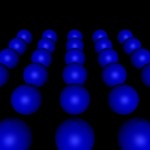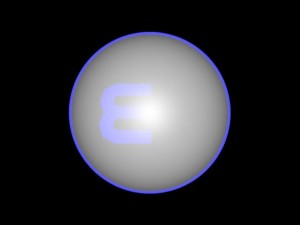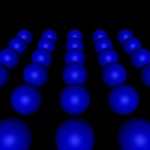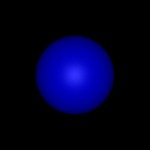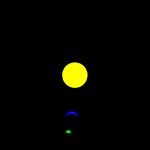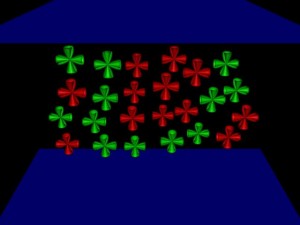The book Resonance Universe Theory: A Theory of Time was originally published on February 2, 2010. It has now been self-published as a book using Amazon’s Kindle Self-Publishing service. Please visit the Author Page to view this and the other books of the author. The book presents a theory of entropic time, which is meant to replace space-time in calculations of extreme conditions for both quantum mechanics and cosmology. It reformulates Boltzmann’s H-theorem then develops the light paths of a six dimensional universe to provide a means to measure entropic time. One of the more startling predictions is that space itself is quantized, possessing a smallest distance, which in three dimensions is the radius of what I call the minimum sphere. The theory demonstrates a relationship of the time invariant Schrödinger’s equation with Maxwell’s equations of electromagnetism. This relation shows how an electric field within our physical three dimensional world is equivalent to a magnetic field within a three dimensional mirror image world of our world. These two three dimensional domains comprise the six dimensional universe upon which entropic time is measured.

The Minimum Sphere Deforms with the Force of a Linear Harmonic Oscillator.
Animations
Any traveling particle that possesses either electric charge or kinetic energy will induce oscillations upon the minimum spheres it traverses. Note that the disturbance induced by the particle has a wavelength extending across several minimum spheres. This wavelength represents the size of the particle-wave that experiments measure in accordance with the Heisenberg Uncertainty principle.
Within any one minimum sphere its contents are in a perpetual state of resonance in which any one entity cannot be distinguished from its mirror image. Here within the minimum spheres is where our physical world meets its mirror image.
Empty space is teeming with particles that emerge from the minimum spheres only to return to the mirror image world by re-entering another minimum sphere. Particles with a short half-life return quickly from whence they came while stable particles remain outside the minimum spheres without entering if ever.
Responding to the self energy generated by any passing particle that possesses kinetic energy a minimum sphere deforms in its lowest mode of oscillation between prolate and oblate spheroid forms. Here we see the complete cycle for the oscillation of the lowest mode.
The perihelion of a planet’s orbit is that point on the elliptical orbit where the planet reaches it closest approach to the Sun. It is known that all of the interior planets, including the Earth, have orbits in which the location of the perihelion advances slightly in the orbit with the completion of each orbit by the planet around the Sun. This effect is most pronounced in the orbit of Mercury about the Sun. The orbit of the Moon about the Earth also shows a precession of the elliptical orbit, which at first appeared to be inconsistent with Newton’s Law of Gravity, but was later found to be consistent when higher order perturbation effects were taken into account. No modification of Newton’s Law of Gravity was required.
Depending upon your viewpoint the Moon may or may not appear to be orbiting the Earth. When viewed from Earth the Moon appears to orbit our planet. Yet, if viewed from above the plane of the ecliptic the Moon would appear to orbit the Sun with an unusual orbit that weaves in and out of the orbit of the Earth as it revolves about the Sun. It is actually the Earth-Moon center of gravity that truly orbits the Sun. Because of the much greater mass of the Earth than the Moon this center of gravity is located within the interior of the Earth but is not at the center of the Earth. It is important to remember that regardless of the viewpoint, the orbit of the Moon about the Earth, or of a planet about the Sun, is always closed.
You will (almost) never see this. The Second Law of Thermodynamics tells us that the disorder of the entire universe is always increasing. Yet there is a finite probability that within a closed, isolated system, obeying quantum statistics, a mixture can fluctuate into a condition where it spontaneously segregates into distinct phases. A closed, isolated system is one in which neither mass nor energy is exchanged with its environment. If a fluctuation were to occur such that a closed, isolated system would spontaneously segregate into distinct phases then the environment of that system would also experience a quantum fluctuation such that the disorder of the entire universe is increased.

